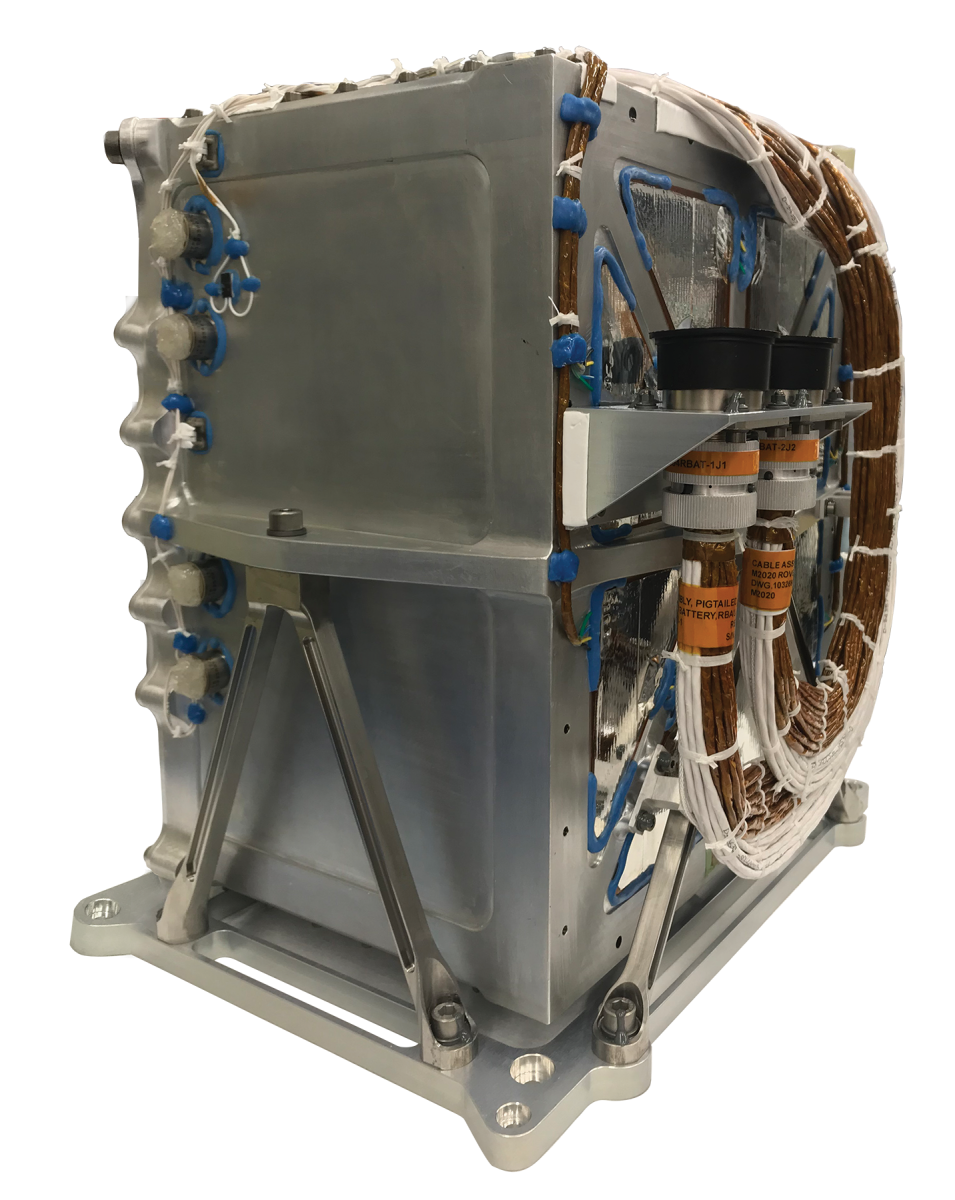
Perseverance rover, lithium-ion
Abstract
EaglePicher has a long history of supplying batteries and energy storage systems for launchers, satellites, rovers, landers and other space applications. EaglePicher has achieved over 2.8 billion hours of cell operations in space applications with no failures. This success ranges from the early Apollo missions, decades of nickel-hydrogen powered satellites, to highly successful planetary exploration missions. EaglePicher also has a legacy of lithium-ion cells and batteries in a range of space applications including GPS III, Mars Exploration Rovers (MER) Spirit, Opportunity and Perseverance (Exhibit 1), and the Juno mission exploring Jupiter at the greatest distance from Earth a lithium-ion system has traveled. All of these missions are supported with high reliability, high performance cells and batteries manufactured by EaglePicher. The performance, life, and power and energy density provided by these battery designs are truly mission enabling; delivering the energy storage solutions critical for mission success. After powering the MER rovers for over 14 years, supporting more than 25 orbits of Jupiter and preparing to recover material from the surface of asteroid Bennu, the batteries designed and developed for these missions have led to numerous scientific discoveries. The Mars Curiosity Rover team alone has generated over 400 publications to date. EaglePicher continues to drive new advancements in cell and battery designs, new electronics for power management and control, and new techniques for improved battery assembly and reliability. Future missions will benefit from these next generation enhancements including improved safety features for both manned and unmanned missions, managed arrays of commercial-off-the-shelf cells, and high energy rechargeable and non-rechargeable chemistries. This paper reviews these mission enabling technologies, enhancements in battery designs and performance, and current and future scientific explorations enabled by the technology.
Introduction
Energy and power storage is critical for achieving mission goals in space science and exploration. The amount of energy provided often dictates the operational length of the mission; the number and type of science experiments that can be performed; and operating environments where the mission can perform. The size and weight of the energy storage systems are often significantly constrained as mass and volume are severely restricted in spacecraft design; just getting off the ground is significantly more difficult and expensive as weight increases. Once installed and launched, the energy and power storage systems must be highly reliable, with redundancy and/or performance features that guarantee mission success. Replacing batteries after launch is very often not an option. Thus the batteries for space exploration missions must:
- Have very high energy density
- Provide power over wide temperature ranges
- Have long operating and calendar lives
- Be robust enough to survive high shock, vibration and radiation environments
- Be extremely reliable to support all the mission requirements
EaglePicher has been developing, qualifying and delivering extremely high-reliable batteries for space missions since Explorer 1, the first United States launched satellite, in 1958. EaglePicher produced batteries for satellites, launch vehicles, planetary rovers and landers, and all manner of space exploration, communication, and observation platforms ever since. To date, EaglePicher batteries have demonstrated over 2.8 billion cell-hours of successful operations in space, without a single failure in space. The type and design of these batteries has ranged from extremely large, >10,000 Wh, to very small, <500 mWh; with chemistries including nickel cadmium, nickel hydrogen, silver zinc and lithium ion. Many of these systems are still operational and the amount of scientific data, pictures and measurements obtained is immeasurable. This paper highlights just a few of these missions, with the batteries’ designs and capabilities that made them possible. This paper also looks to the future energy storage system designs to see how next generation cells, batteries and other systems are meeting the energy and power needs of new missions.
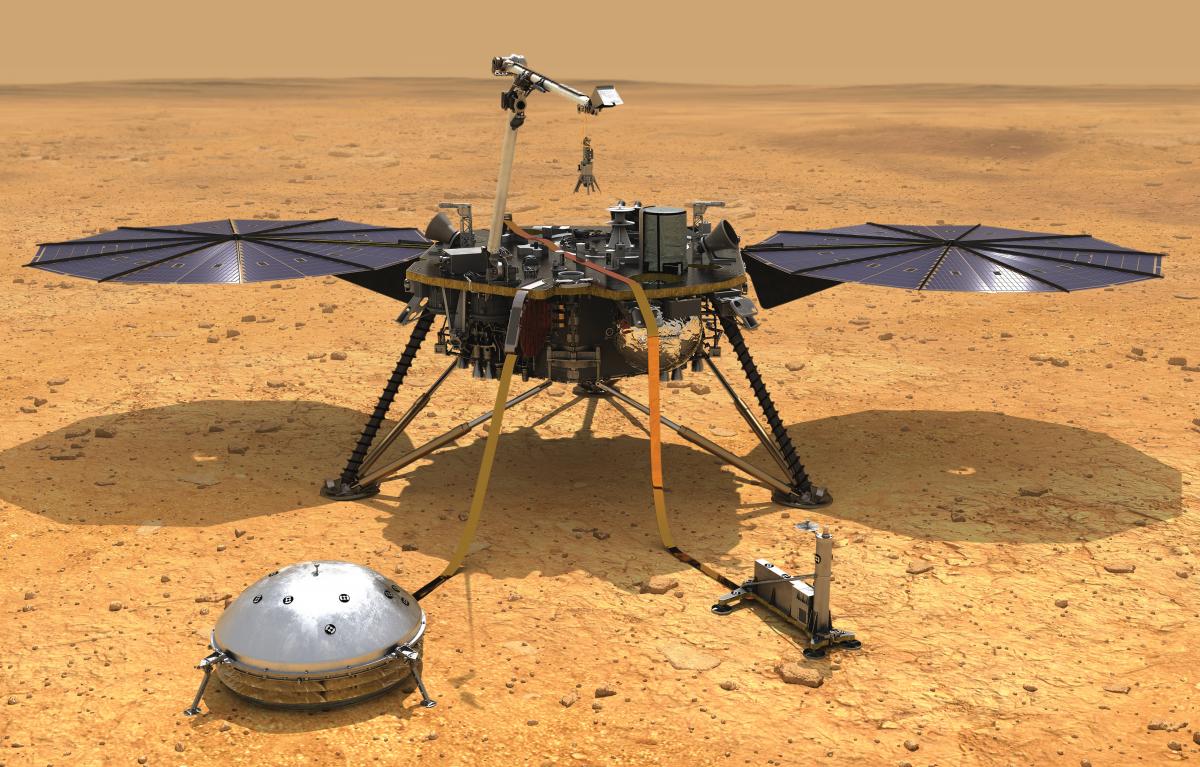
Satellites
EaglePicher has powered over 600 satellite systems, including the Hubble Space Telescope, GPS Block II and III, and several military, commercial and international communication systems. EaglePicher was one of the largest producers of nickel hydrogen batteries for satellite applications, with some of those batteries still in operation. In the early 2000s, satellite systems started transitioning over to lithium-ion batteries. With increased energy density and higher operating voltages reducing the cell count for high-voltage buses. EaglePicher produces batteries with internallymade bespoke prismatic space cells (Exhibit 2), but also produces batteries with cells from other vendors (Exhibit 3). As the size of individual satellites has decreased and the number of satellites in a constellation increases, the cost pressures on satellite batteries has increased. To address the latest high unit count constellations, EaglePicher has developed battery systems using commercially available (COTS) cylindrical cells, often from Asian manufacturers. These designs afford scalability and flexibility by combining modules of cells in different configurations to account for different voltage and energy needs (Exhibit 4). This approach reduces overall system design and qualification costs, while offering significant flexibility to meet changing system designs.
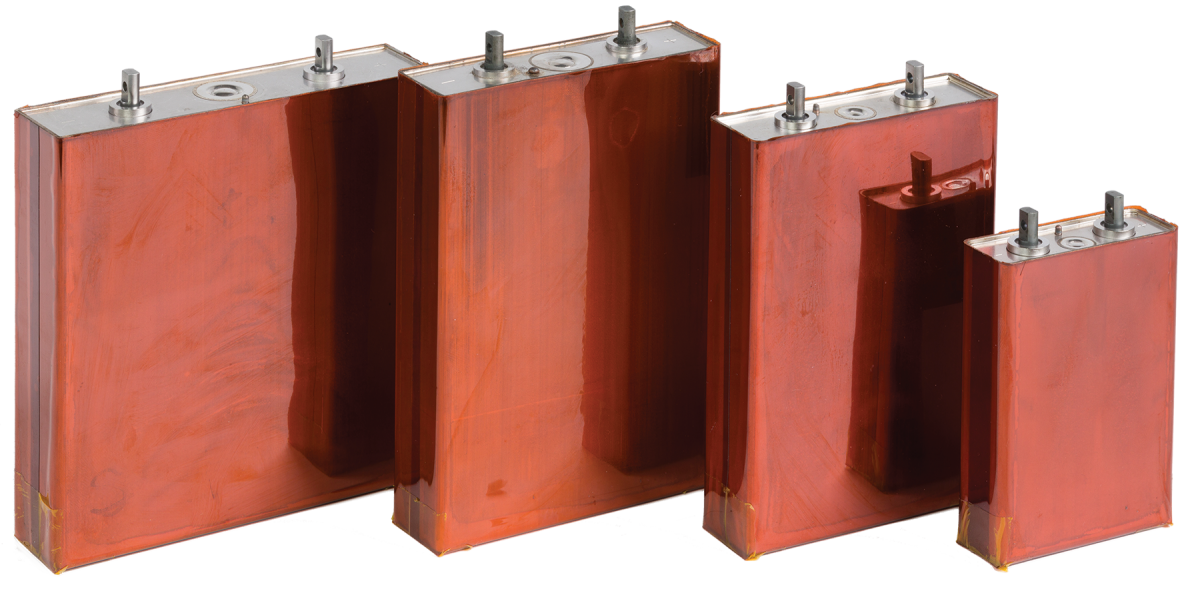 |
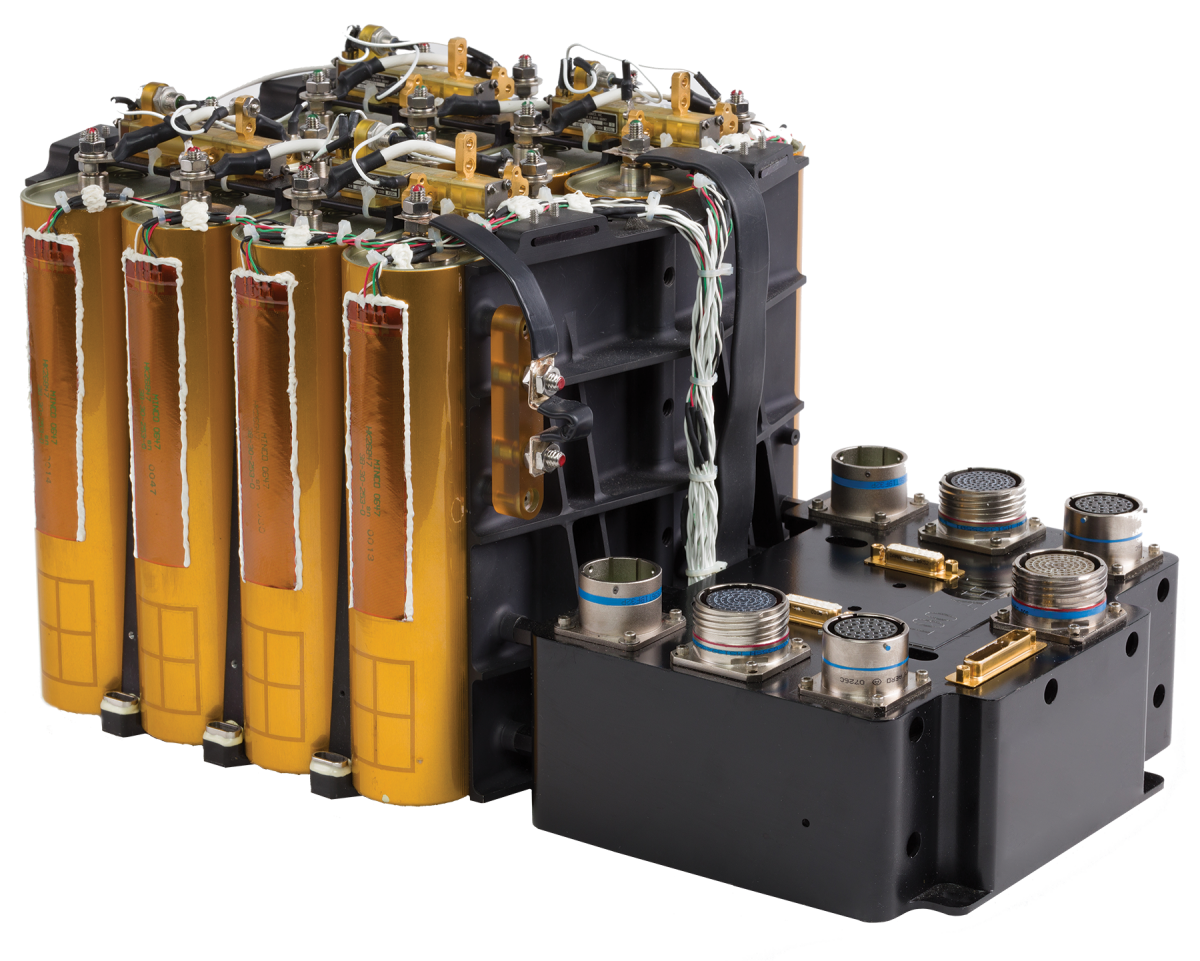 |
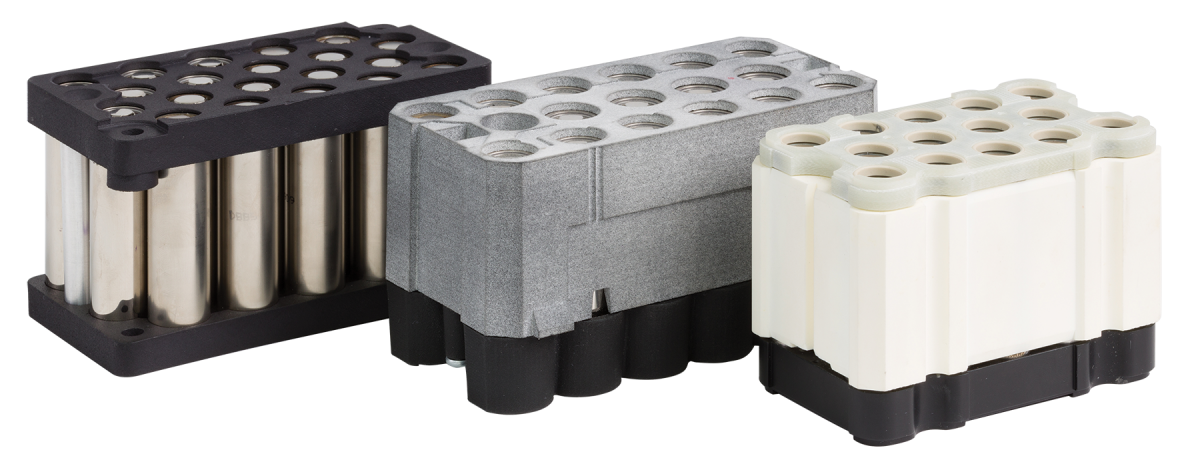 |
Launch Vehicles
Silver-zinc batteries continue to be used to power multiple systems on launch vehicles. The main and pyro batteries for the Atlas V Evolved Expendable Launch Vehicle, and the Flight Termination System (FTS) batteries for both Atlas V and Delta II/IV are silver-zinc batteries designed BY EaglePicher for high power and energy density, and ruggedized to endure the vibration environments of a launch (Exhibit 5).
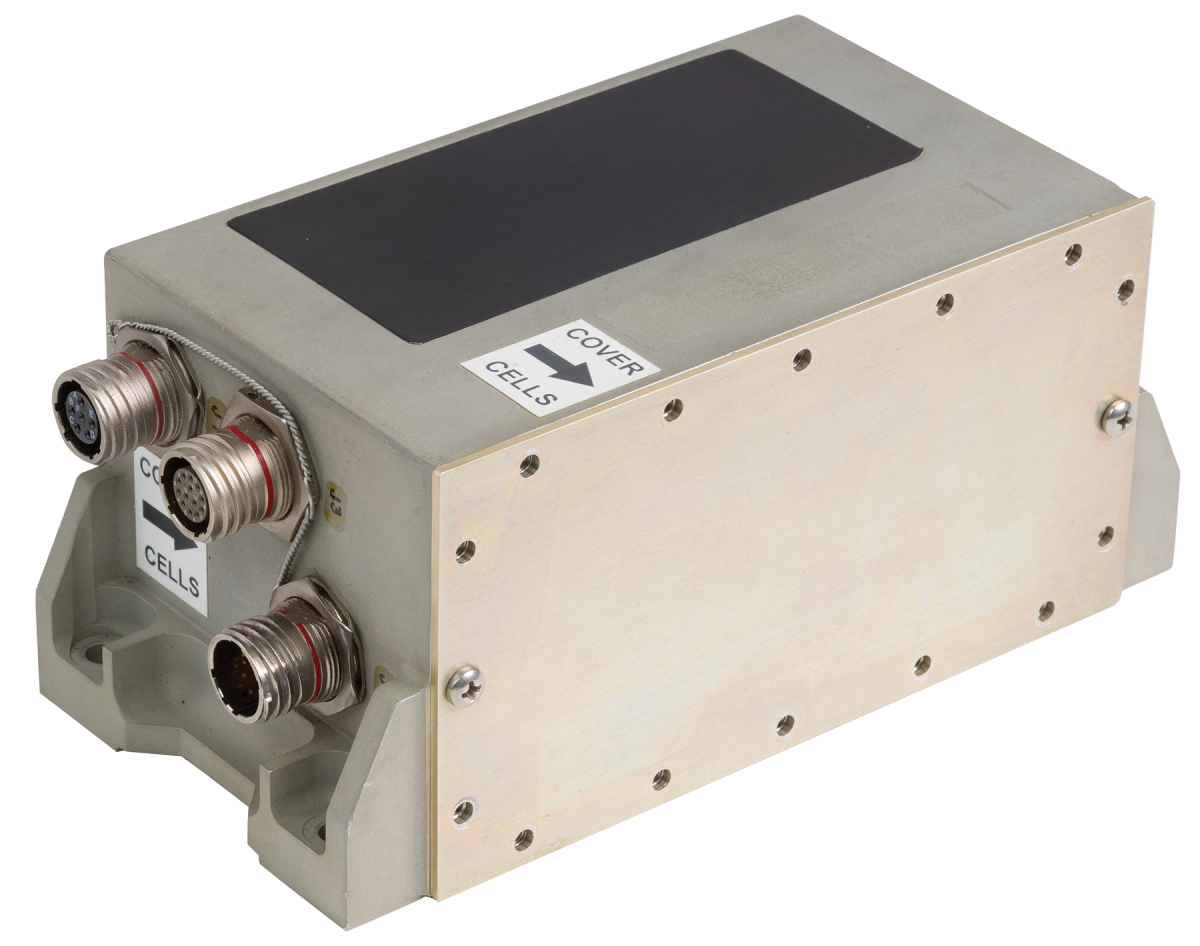 |
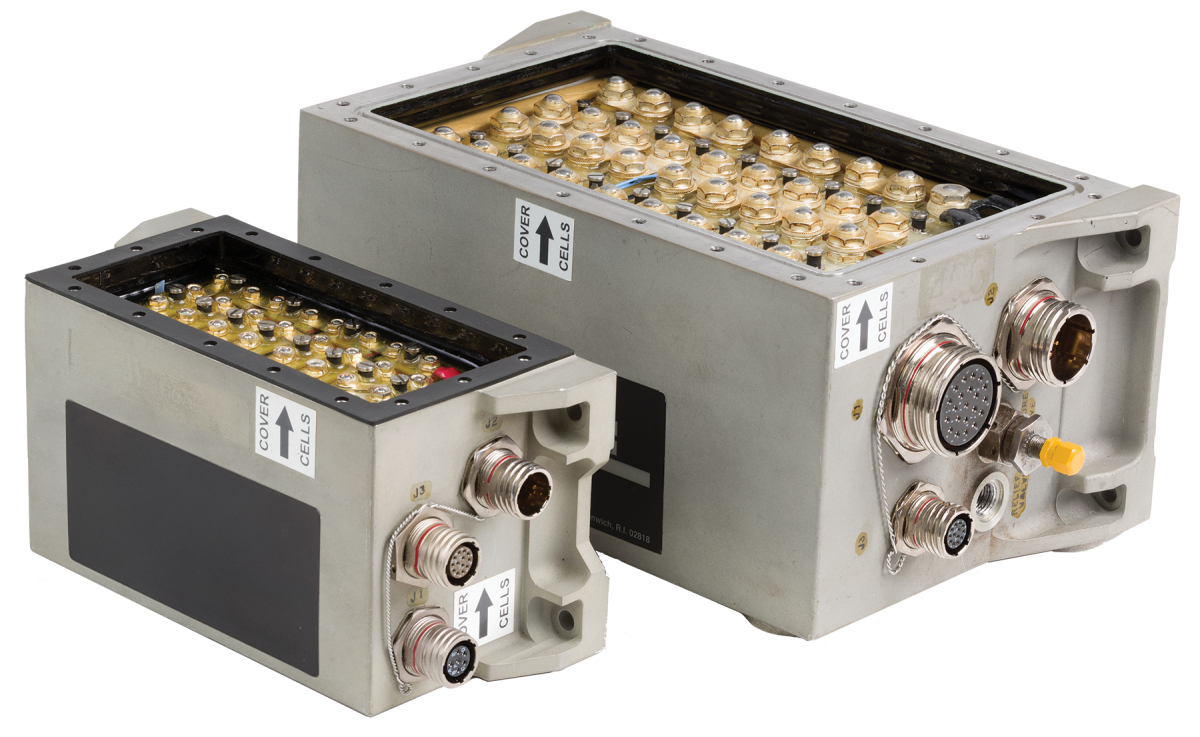 |
Exhibit 5: Silver-zinc batteries for the Atlas and Delta launch vehicles |
Manned Space
Mercury, Gemini and Apollo
Manned space missions became a high-profile use of our batteries with EaglePicher batteries playing critical roles in the Mercury, Gemini and Apollo spaceflights of the 1960s and 1970s, including trips that landed astronauts on the moon. When an oxygen tank explosion crippled the Apollo 13 spacecraft during its lunar mission in 1970, the safe return of three brave American astronauts depended heavily upon the EaglePicher batteries onboard the spacecraft. EaglePicher’s silver-zinc batteries provided electrical power for the life support and guidance control systems after a fuel cell failed on the Apollo 13 landing, thus helping the astronauts get safely back to Earth.
International Space Station
EaglePicher silver-zinc and nickel-hydrogen batteries were used on the Space Shuttle, and installed as the primary power for the International Space Station (ISS) in 1998. The ISS batteries continue to provide energy storage as NASA is slowly replacing the nickel-hydrogen batteries with lithium ion, a process started in 2017.
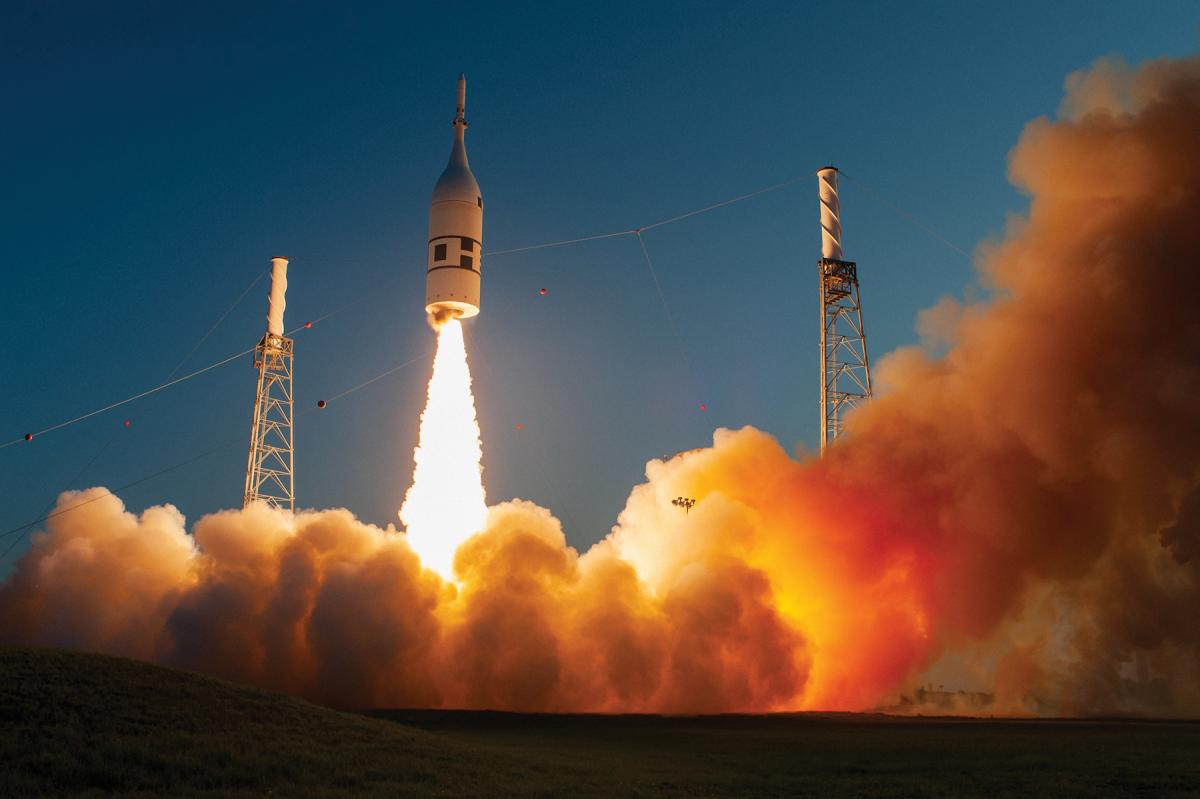
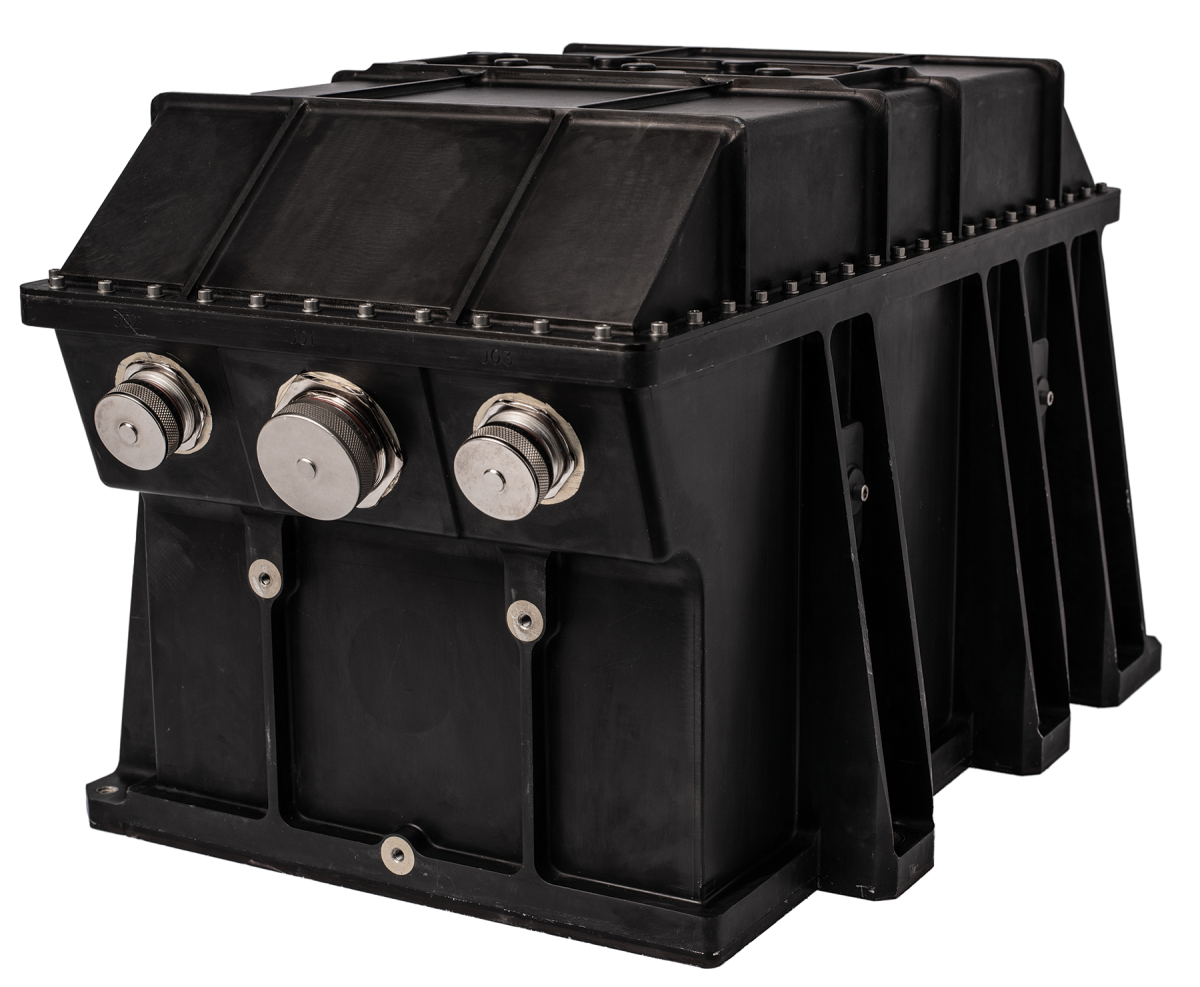
large-cell battery
Orion
NASA’s next manned space vehicle is the Orion Multi-Purpose Crew Vehicle, known as the Artemis program. This Crew Module resembling the earlier Apollo-era manned modules, but larger and able to transport up to six astronauts to destinations as far as Mars. EaglePicher has built two versions of the Crew Module Battery (Exhibit 6); a large-cell battery, based on custom designed 30 Ah cells; and a newer small-cell battery utilizing commercially available cylindrical cells. Both batteries are nominally 120 V and provide over 3,600 Wh of energy. The batteries are designed for extremely high-shock and vibration environments to support the emergency abort conditions to lift the Crew Module to safety in case of a failure during launch. The large-cell battery has already supported the first experimental test flight of Orion (EFT-1), launched in 2014, and is currently installed to support the next Engineering Mission (EM-1) when it launches for its flight around the moon. The small-cell battery will be fully qualified and ready for the first manned missions in preparation for return to the moon, exploration of near-earth objects and asteroids and bringing astronauts to Mars.
Deep Space Exploration
Mars
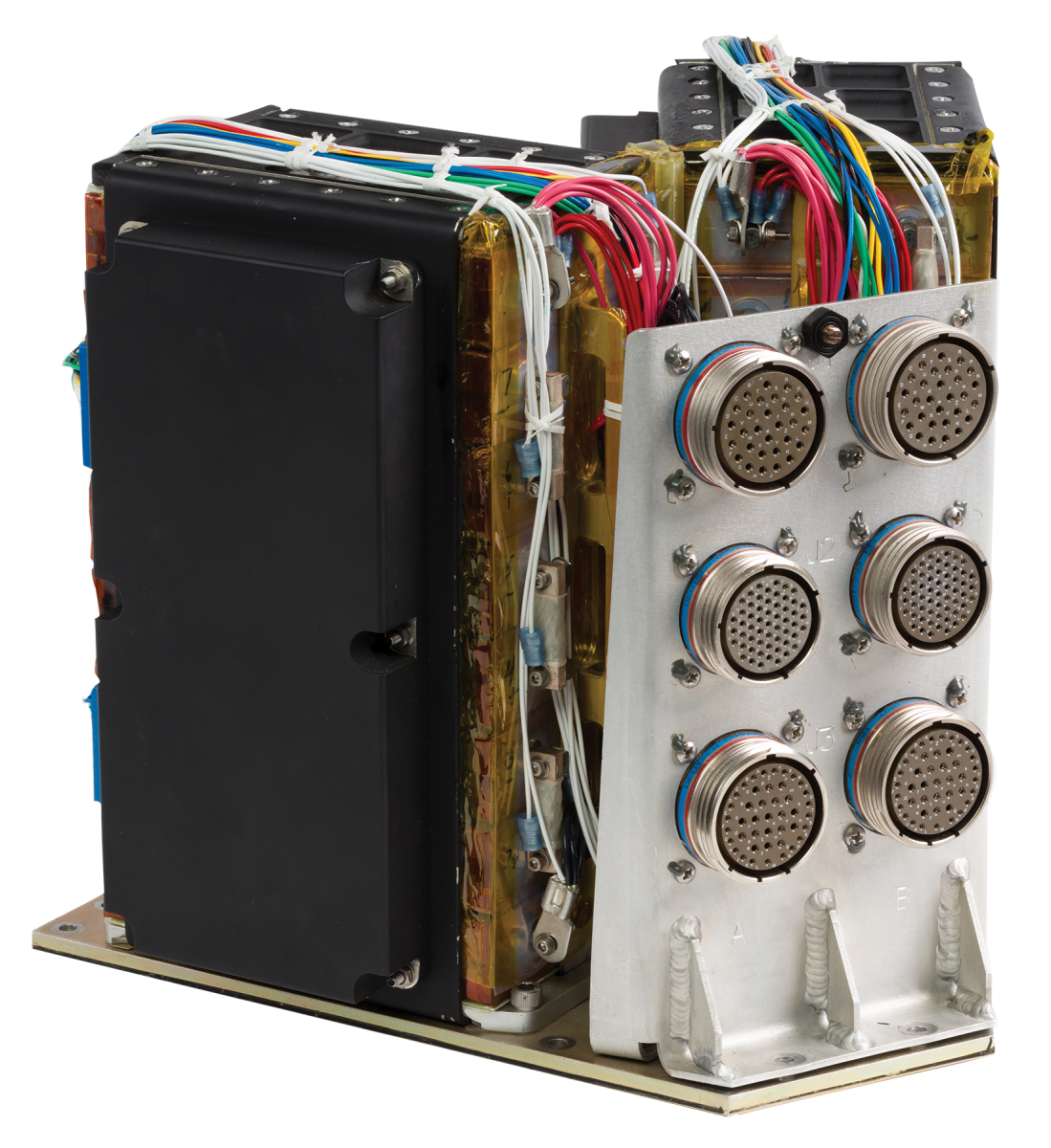
battery, a similar design was used
for the Phoenix mission
Mars has been fertile ground for many missions by NASA and other international space agencies. Several of the landers, orbiters and rovers studying Mars, looking for water sources and signs of life, are powered by EaglePicher batteries. Launched in 2003, the Mars Exploration Rovers (MER) Spirit and Opportunity landed on the surface in early 2004. Designed for a minimum 90-day mission, the two rovers sent back incredible pictures, provided proof of the existence of flowing water on the surface of Mars at one time, and continued to expand our understanding of the planet and deepen our desires to send humans to explore. Both rovers were powered by two 10 Ah, 28 V batteries. The batteries were recharged by solar panels; and were required to provide the high power necessary to survive through dust storms, travel across the Martian surface, perform the scientific experiments, and transmit all the accumulated data back to Earth. While only expected to last for a short duration, the rovers far exceeded expectations, with Opportunity finally ceasing operations after over 14 years and traveling over 28 miles on the surface. Joined in 2006 by Mars Science Laboratory Curiosity, and soon the Mars2020 rover Perseverance, the man-made vehicles on the Mars surface continue to be powered by EaglePicher batteries. Two landers, Phoenix and InSight, have also operated, quite successfully on Mars, powered by EaglePicher batteries (Exhibit 7). Due to the length of these missions, and the low temperatures the batteries are exposed to, these lithium-ion systems are specially formulated and qualified to operate as low as -30°C (-22°F).
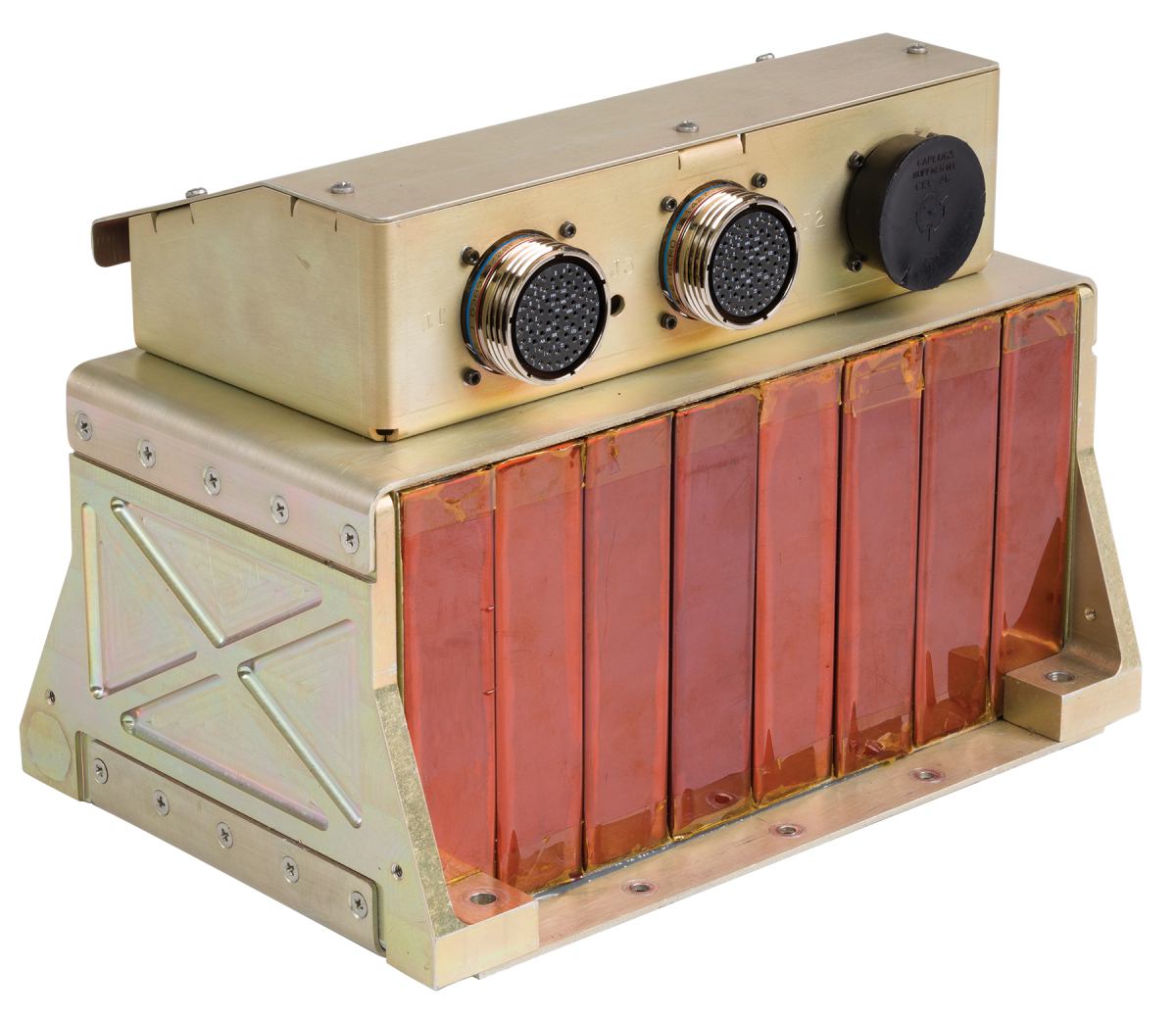
Juno mission to Jupiter
Jupiter
The Juno mission launched in 2011 to start on a five-year voyage to Jupiter to begin an in-depth study of Jupiter’s composition, formation, and gravity and magnetic fields. Powered by large solar arrays, the furthest from the sun solar power has been used, the spacecraft has two 60 Ah, 28 V lithium-ion batteries (Exhibit 8) to provide surge power and energy during eclipse portions of its Jovian orbits. Due to space limitations in the lead-lined shielded areas of the craft, the batteries are positioned on an outer part of the vehicle, where they are exposed to a significant amount of high levels of radiation coming from Jupiter. This chemistry, and similar cells, has already demonstrated tolerance to γ-radiation levels as high as 25 Mrad, with less than 10 percent capacity loss. The ability of the batteries to operate in this harsh environment is critical to mission success. To date, the incredible patterns and extreme detail of the pictures and videos returned from Juno have amazed the public and over 400 scientific publications have been produced as a result of this mission.
Conclusions
These are just a few of the spacecraft and missions powered by EaglePicher batteries. EaglePicher has been providing batteries of all shapes, sizes, chemistries and capabilities to support space missions since the 1950’s. The number of scientific discoveries enabled through the return of countless pictures, videos, measurements and observations has dramatically enhanced our understanding of our planet, solar system and the entire universe. A broad range of cell and battery types, chemistries, and designs are available for each mission’s unique requirements and restrictions. EaglePicher is a leading provider of high performance, mission capable batteries and energy storage systems, and continues to support the never-ending quest for exploration and new discoveries.


